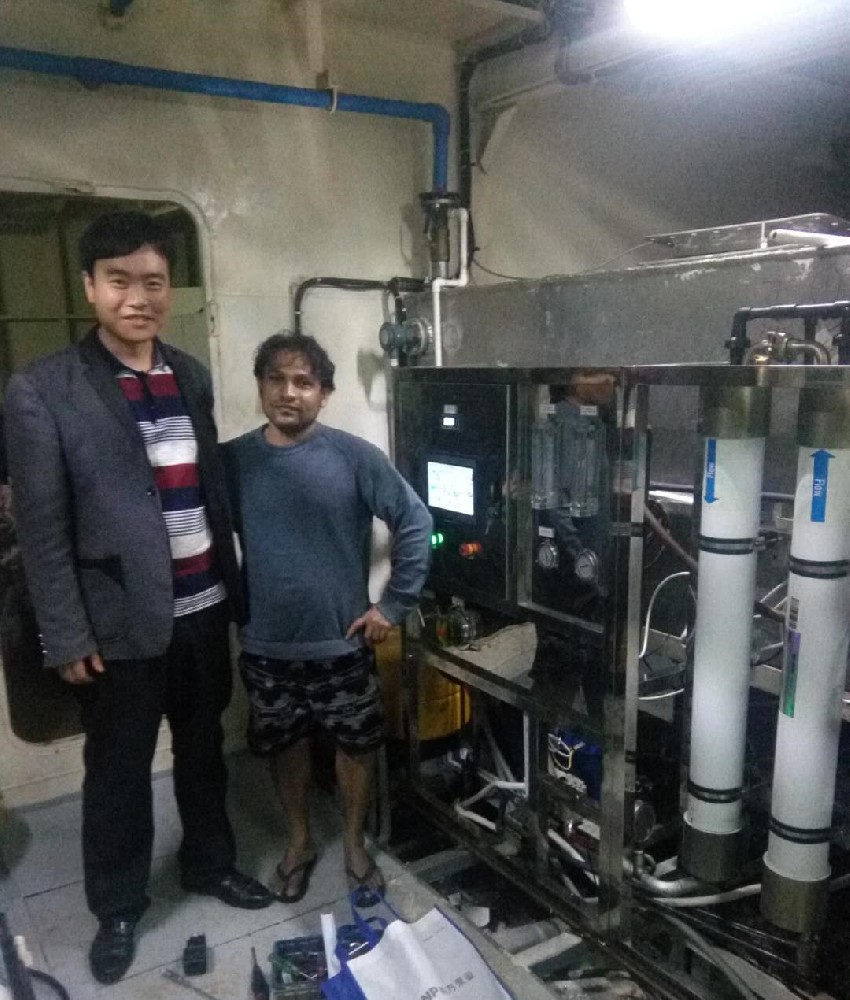
Wechat/Whatsapp:
+8613798883773

Wechat/Whatsapp:
+8613798883773
HYWATER Reverse Osmosis plant/system


Common questions about RO plant 1. The function of coagulant used in pre-treatment 1) Improve the structure of floccules to make the particles be heavy 2) Adjust the pH and alkalinity of water to improve the coagulation effect, the coagulant itself does not have coagulation effect, but can promote the coagulation process of impurities in the water. 2. Why the boiler water shall be treated by RO plant 1) Prevent the accumulation of deposits and corrosion of water and steam in the boiler body and auxiliary systems during operation, which will affect the efficiency of heat transfer and conduction of the boiler. 2) Then can better ensure the steam quality to prevent scaling and corrosion of steam turbine components; under the condition of ensuring water quality, reducing boiler blowdown losses can improve economic benefits 3. What is the resin regeneration of pretreatment The resin will be saturated after a period of ion exchange, need to use acid, alkali or salt to regenerate and restore performance. 4. Main factors effect the ion exchange of resin 1) Feed water quality 2) The height of the resin layer 3) Water temperature and water flow speed 4) The performance of the resin itself 5. The main reason of RO plant membrane performance decrease 1) The chemical changes of the membrane: the oxidation interference of membrane hydrolysis, free chlorine and active chlorine 2) The physical changes of the membranee: the compaction of the membrane reduces the water permeability and increases the desalination rate, then the membrane is polluted by fouling, microorganisms, and solid particles. 6. Process principle of cartridge filter It is to use the pores of the pp filter element to process mechanical filtration, so that the trace suspended particles and colloidal microorganisms remaining in the water are trapped or adsorbed on the surface and the gap of the filter element. 7. The dechlorination principle of activated carbon filter The removal of residual chlorine by activated carbon is not physical adsorption, but a chemical reaction. When the free residual chlorine passes through the activated carbon, it produces a catalytic effect on its surface. The free residual chlorine is quickly hydrolyzed into oxygen atoms [O] and chemically reacts with carbon atoms to produce carbon dioxide. According to the above, the activated carbon in the reaction vessel will gradually decrease according to the residual chlorine content in the raw water, and should be supplemented appropriately. 8. Common process and functions of pretreatment Main process: coagulation, clarification, filtration, adsorption, sterilization and other methods Main effect: 1) Remove suspended solids, colloidal substances and organic matter in water 2) Remove microorganisms and heavy metal ions 3) Reduce the hardness in the water 9. Measures to prevent RO plant membrane from fouling 1) Design prompt pretreatmebt to ensure SDI<4, and at the same time add fungicide to prevent the growth of microorganisms 2) Maintain the proper working pressure during RO operation. If working pressure too large will compact the membrane. 3) Maintain the flocculation state of concentrated water during RO plant operation, reduce the concentration polarization of the solution on the membrane surface, and avoid the precipitation of insoluble salts on the membrane surface 4) Add chemical agent to flush the RO membrane during short-term outages, and add protective liquid during long-term outages 5) When the RO water production is significantly reduced or the salt content increases, the surface may be scaled or contaminated, shall process chemical cleaning asap. More inquiries related to Common questions about RO plant please contact: Mob& Wechat& WhatsApp: (+86)13544774483 Email: sales010@water-sy.com We will provide high-quality, all-round comprehensive professional services for project consulting, system design, manufacturing, installation and commissioning, personnel training, etc.
